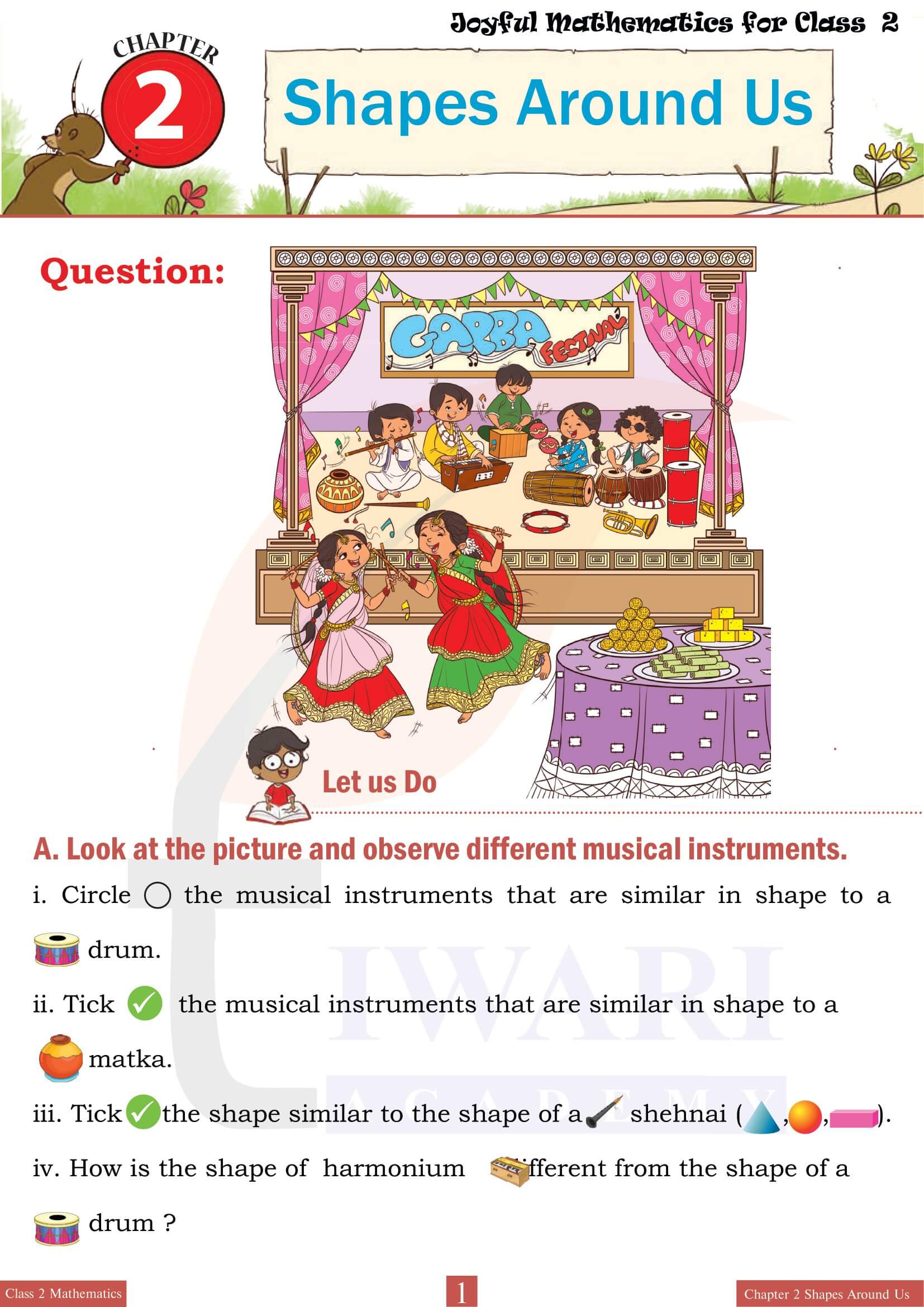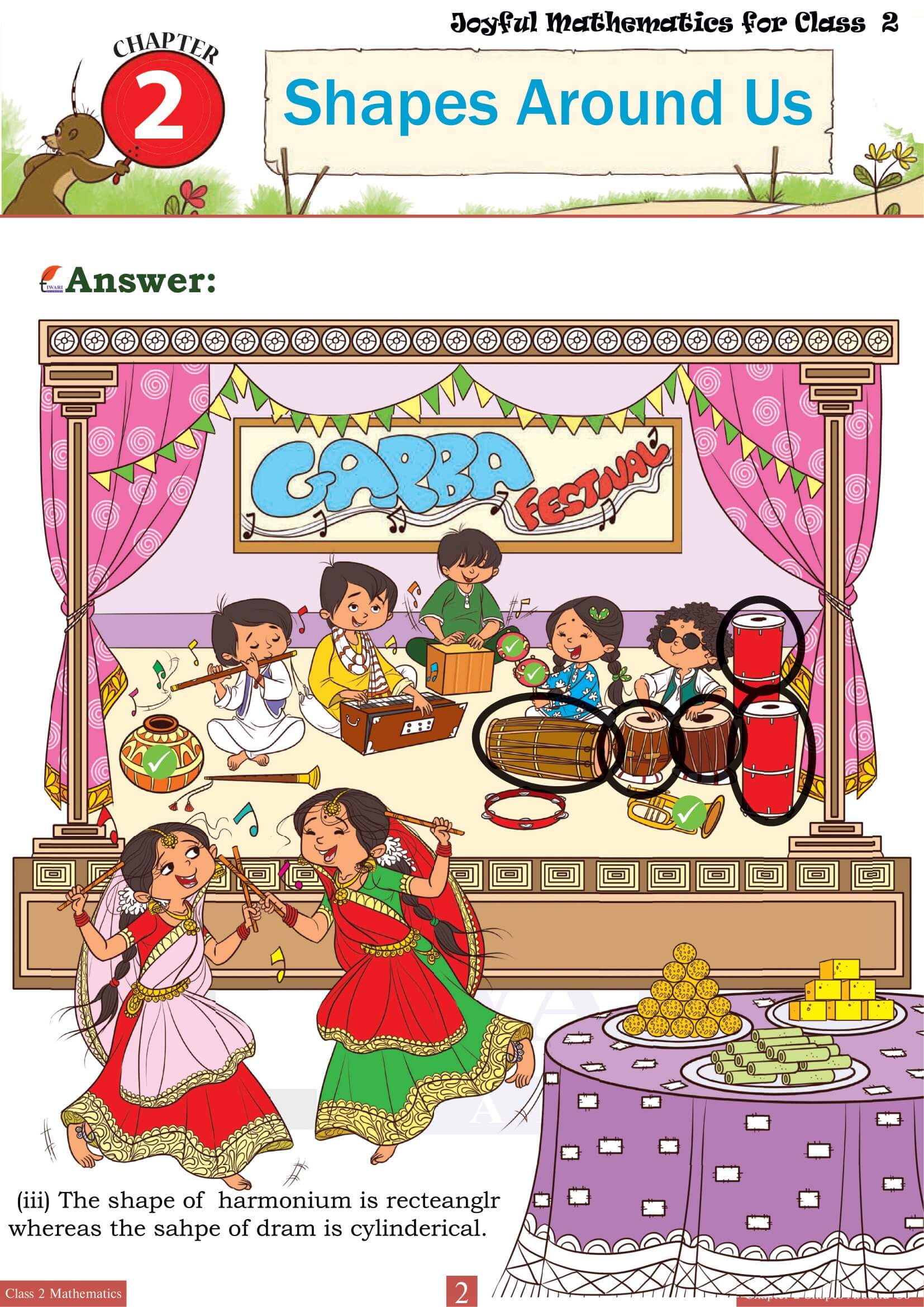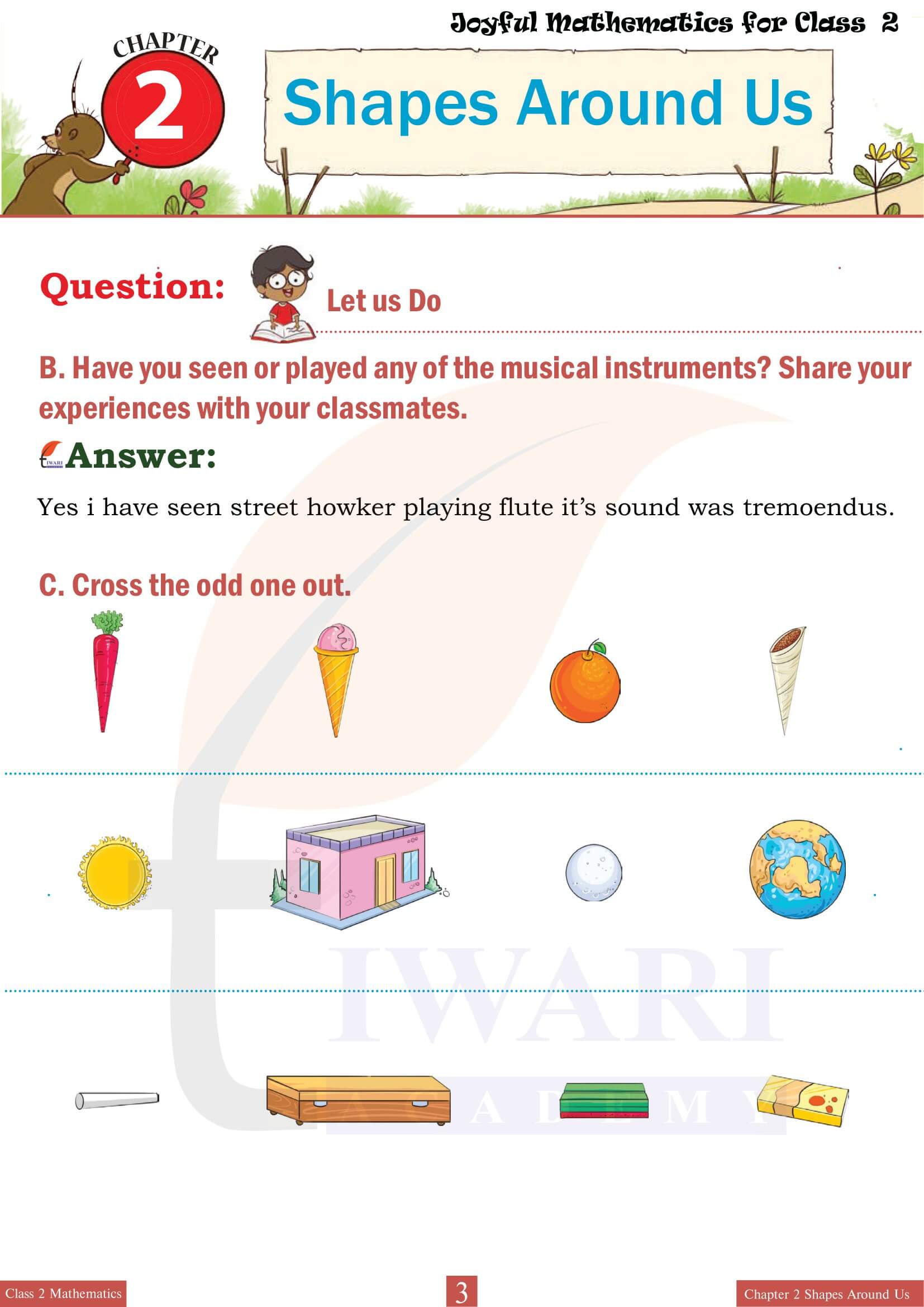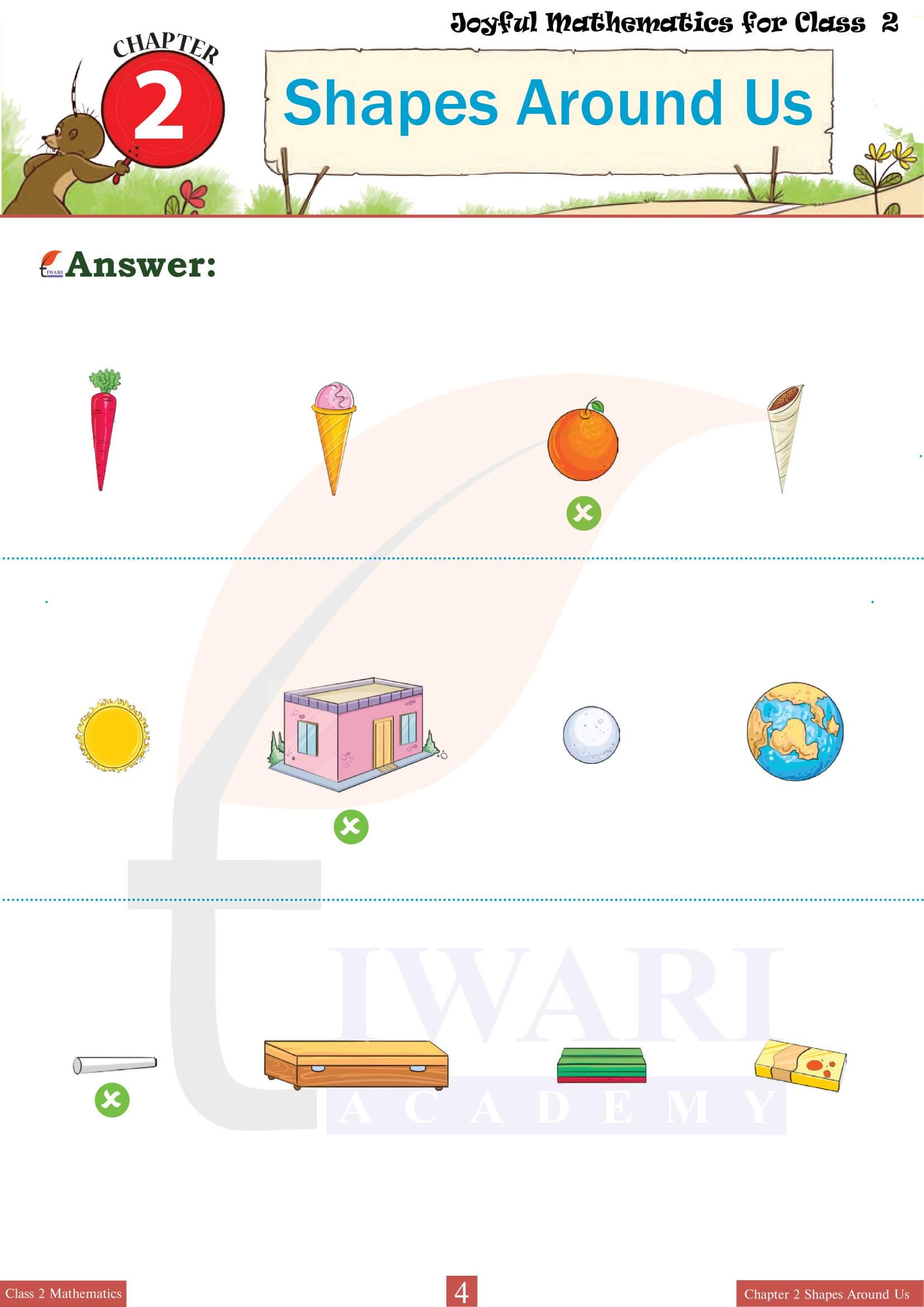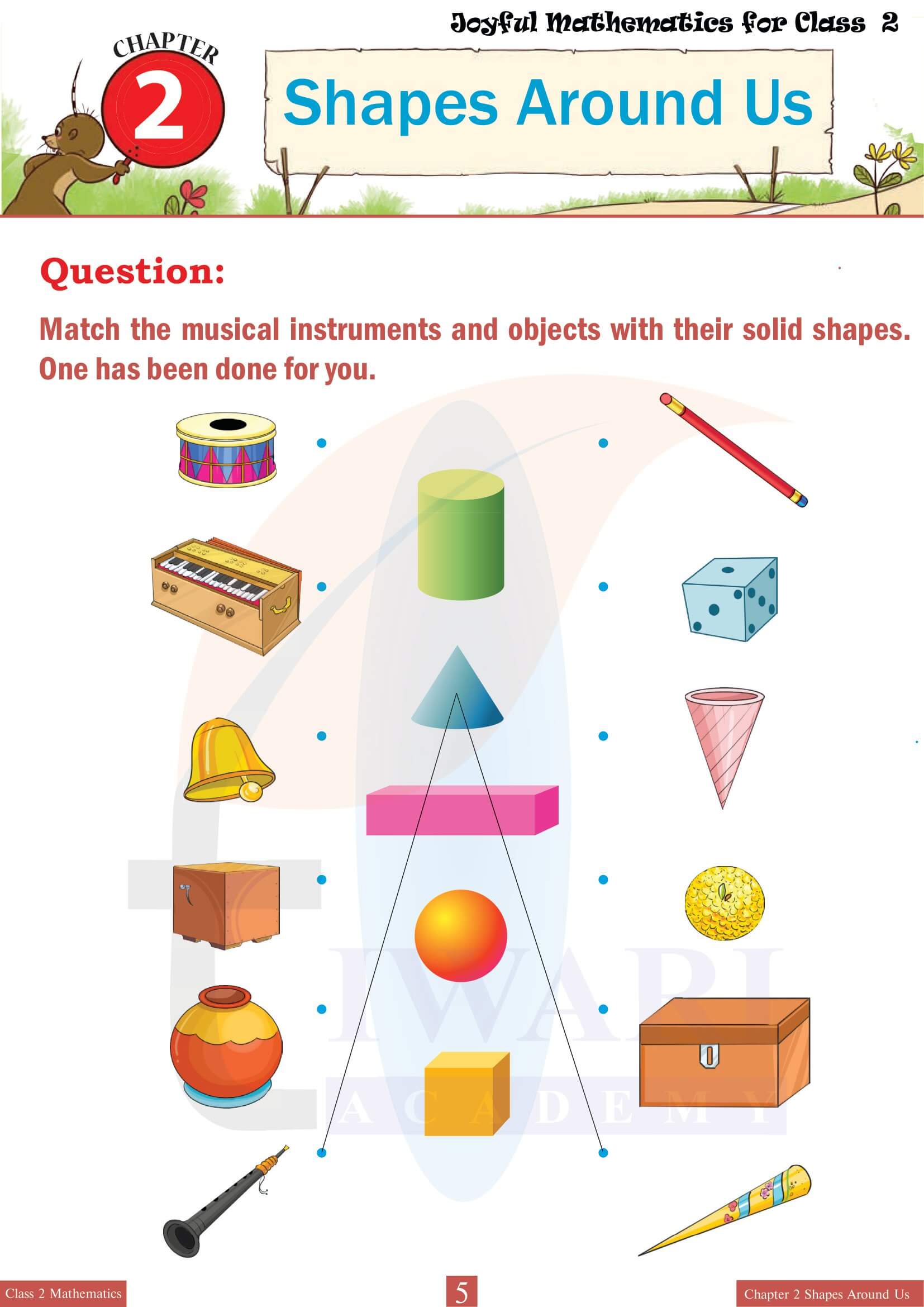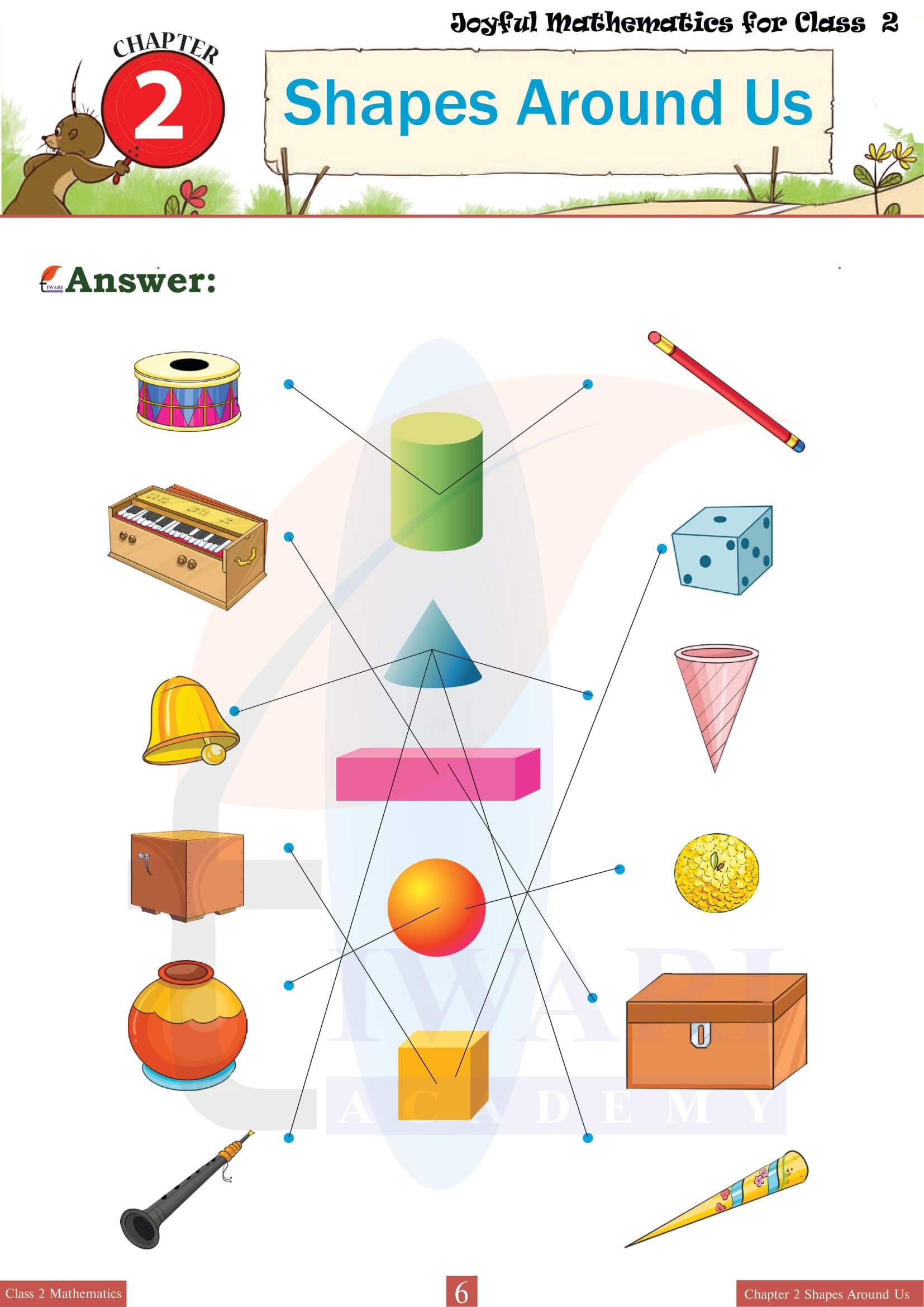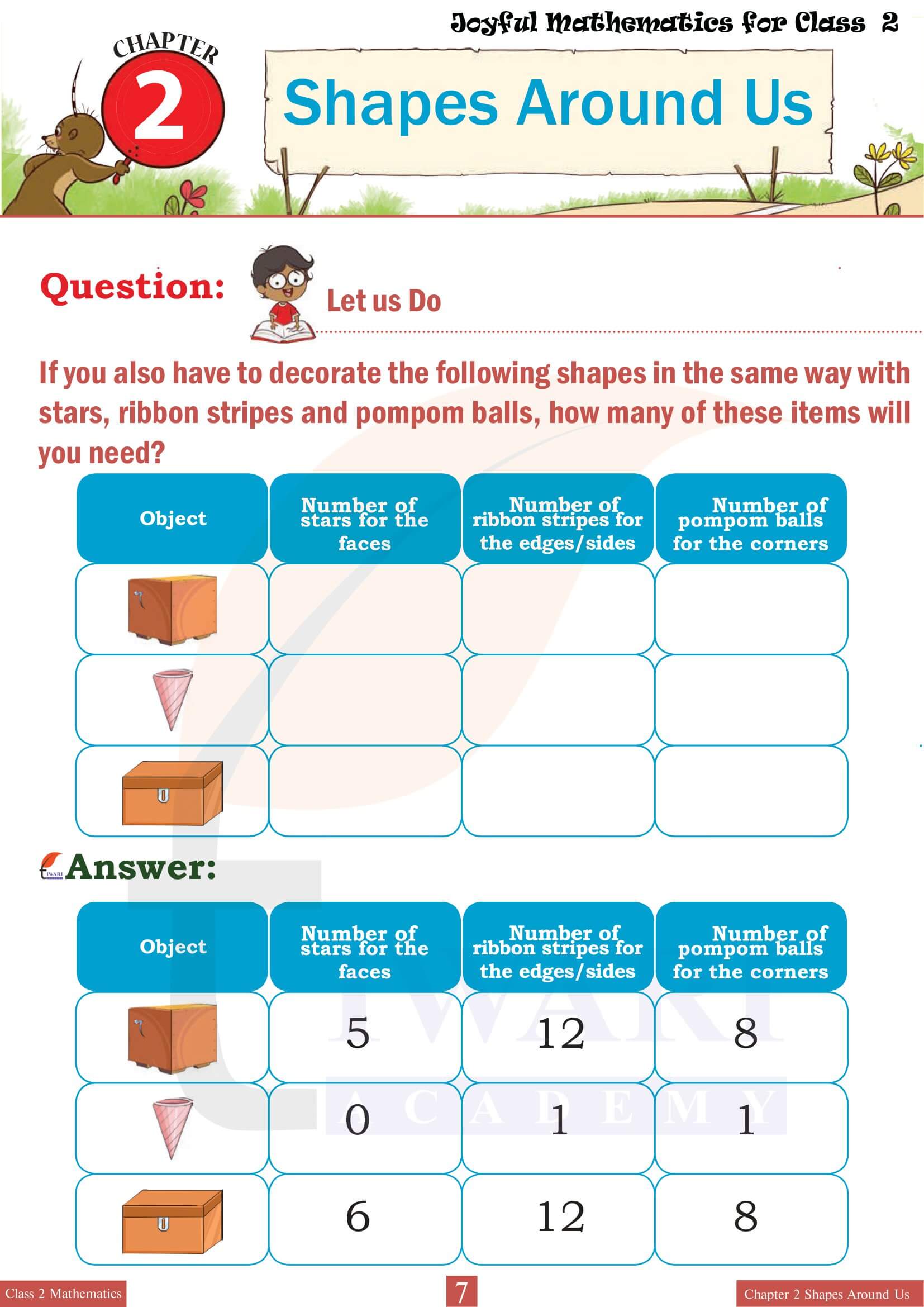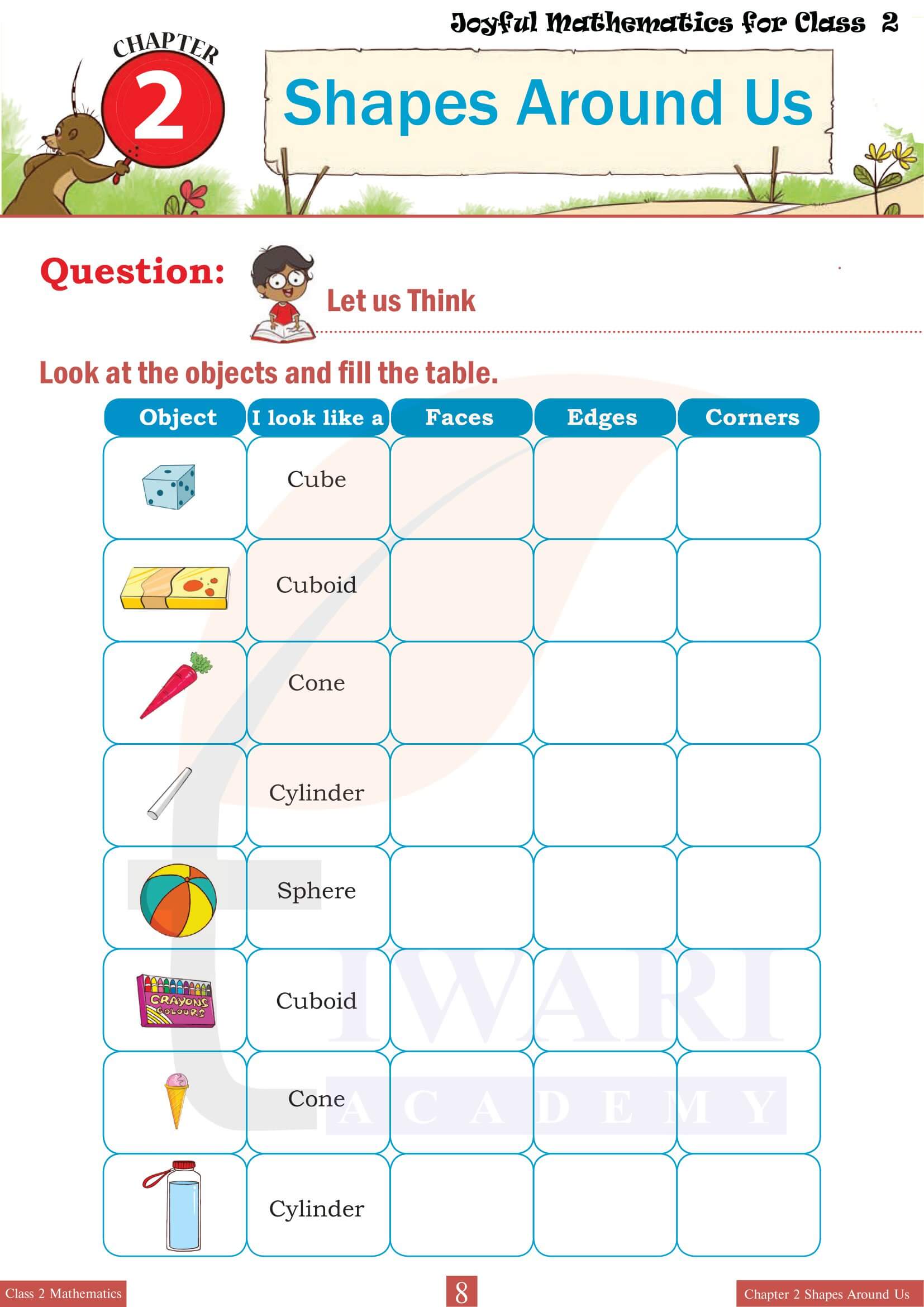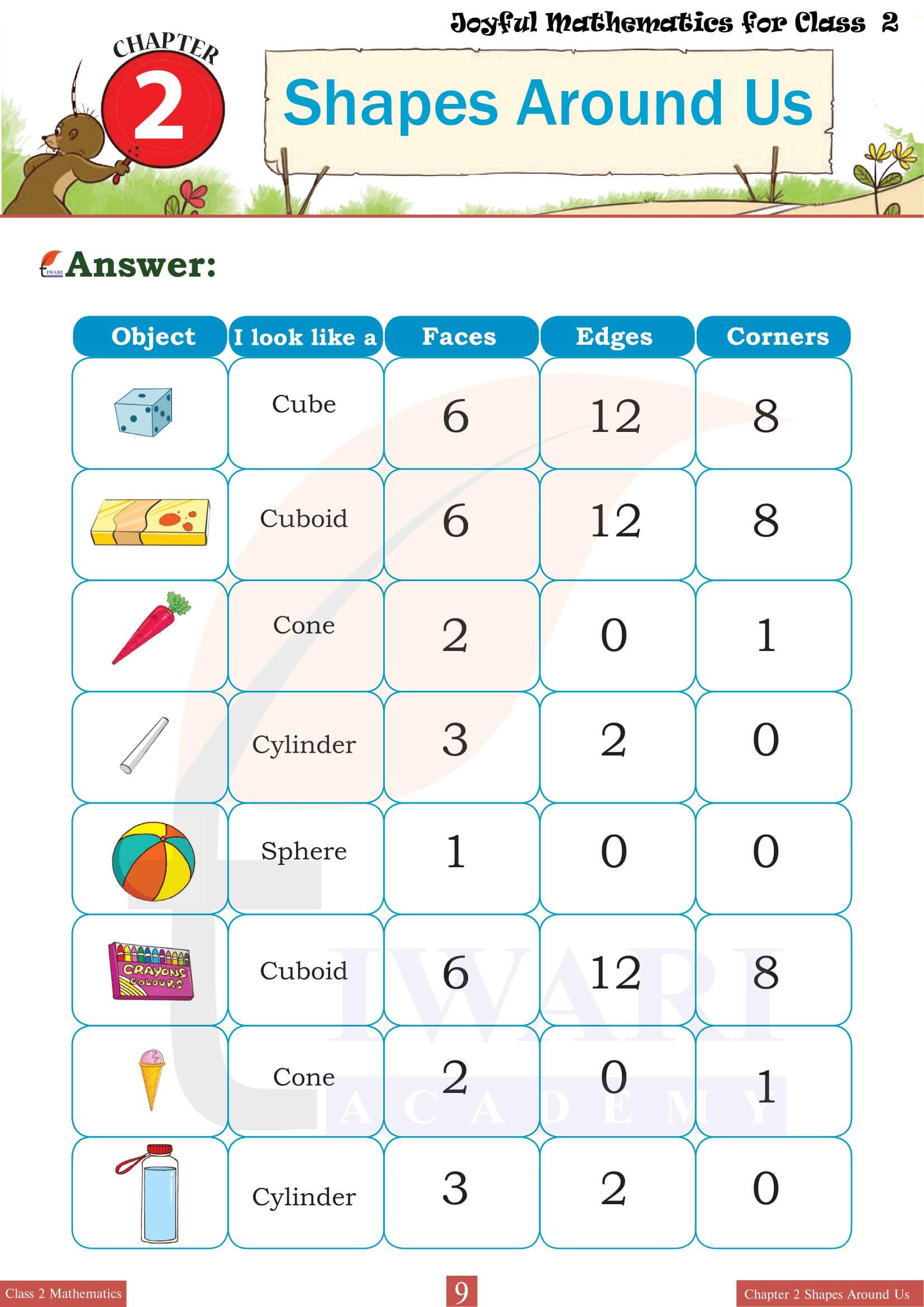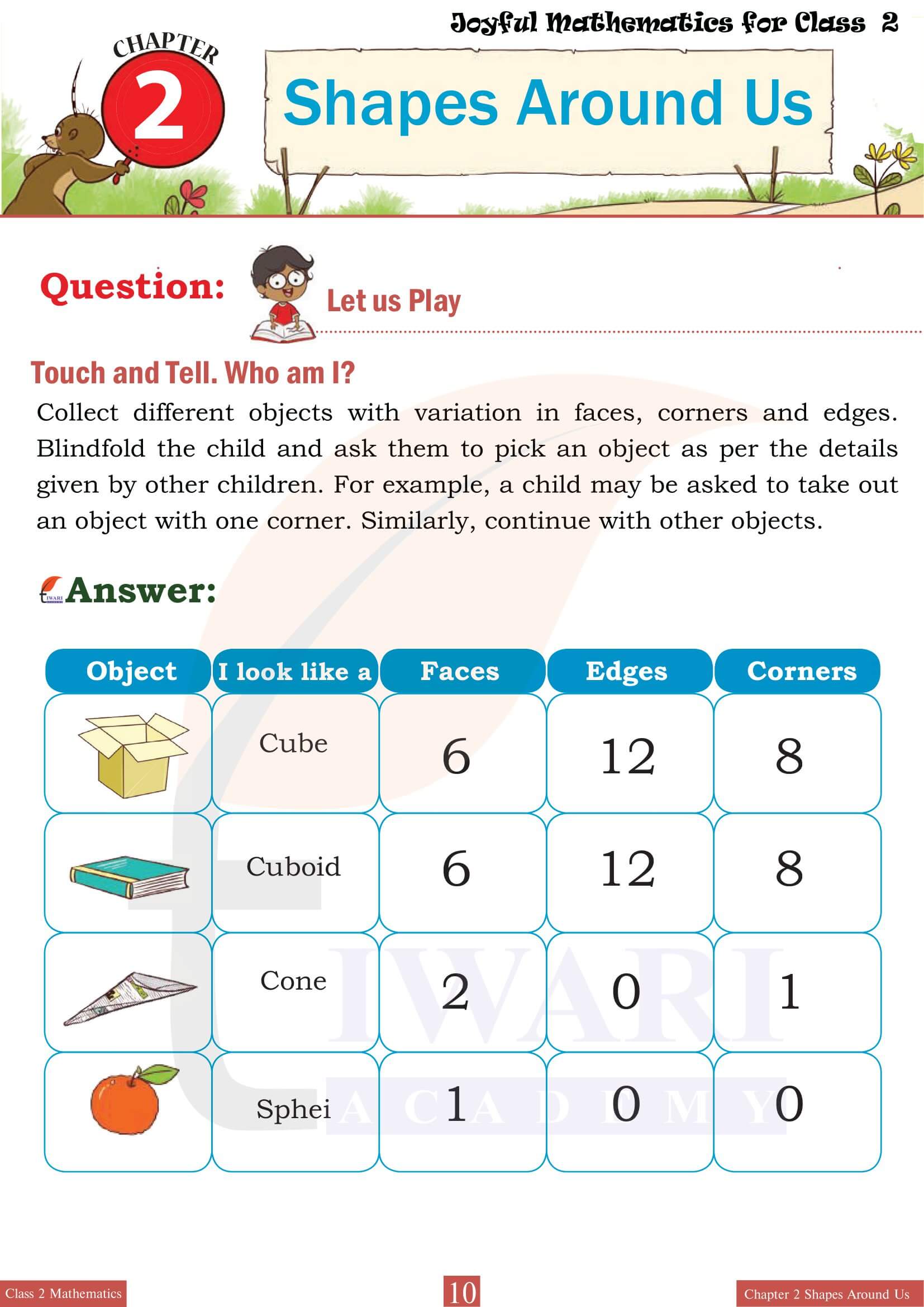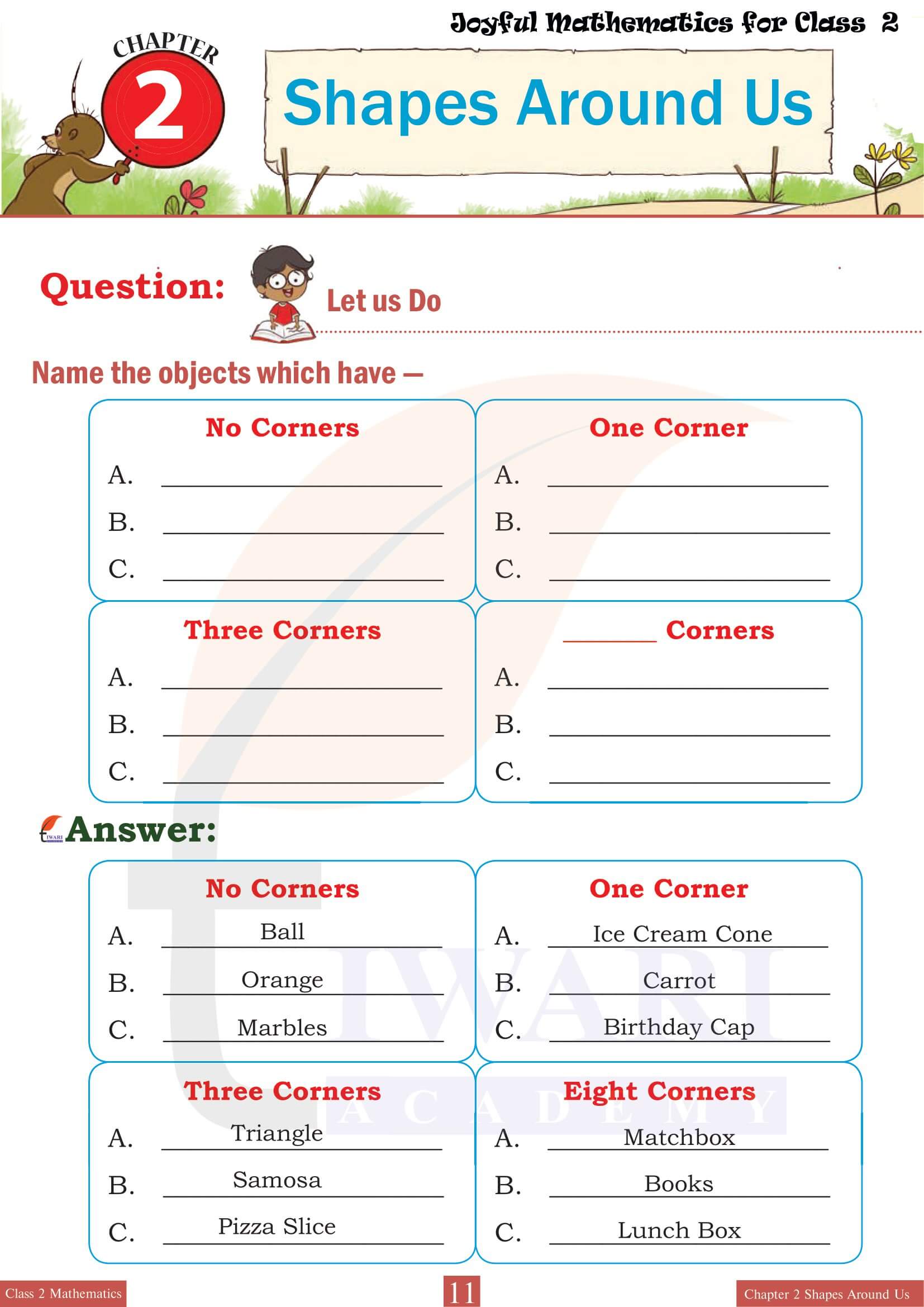NCERT Solutions for Class 2 Joyful Maths Chapter 2 Shapes Around Us (3D Shapes) in Hindi and English Medium based on NEP 2020. Class 2 Maths chapter 2 solutions are updated for new academic session 2024-25 CBSE and State Board.
Class 2 Joyful Maths Chapter 2 Shapes Around Us Solutions
Class 2 Maths Chapter 2 Shapes Around Us (3D Shapes)
In Class 2 Maths Chapter 2 Shapes Around Us, students embark on an exploratory journey to understand and recognize three-dimensional shapes in their environment. This chapter introduces the concept of 3D shapes, distinguishing them from 2D shapes by highlighting their depth, in addition to length and width. Through various interactive activities and visual aids, children learn to identify common 3D shapes such as cubes, cylinders, cones, spheres, and rectangular prisms. This foundational knowledge helps students develop spatial awareness and recognize these shapes in different objects and settings around them, from the packaging of their snacks to the design of playground equipment.
Characteristics of 3D Shapes
Class 2 Maths Chapter 2 delves into the specific characteristics that define 3D shapes, such as edges, vertices, and faces. Each shape is examined in detail to illustrate these features. For example, students learn that a cube has six faces, all of which are squares, and that it has twelve edges and eight vertices. Engaging exercises encourage students to count and record these attributes for various shapes, reinforcing their understanding through hands-on learning. By interacting with physical models or 3D representations, students become adept at distinguishing between different types of 3D shapes based on their unique characteristics.
Visualizing 3D Shapes in the Environment
Shapes Around Us emphasizes the relevance of 3D shapes in everyday life by encouraging students to identify these forms in their surroundings. This practical application of the chapter’s concepts helps students connect classroom learning with the real world. For instance, they might recognize cylinders in water bottles, cones in traffic cones, spheres in balls, and cubes in dice. This segment of the chapter often includes activities like shape scavenger hunts or matching exercises where students pair everyday objects with their corresponding 3D shapes, enhancing both their observational skills and their ability to categorize shapes effectively.
Constructing 3D Shapes
In chapter 2 of class 2 mathematics, students get the opportunity to create 3D shapes using various materials such as clay, play-dough, or construction paper. This activity not only solidifies their understanding of the shapes’ properties but also enhances their motor skills and creativity. As they mold a sphere or assemble a cube, children grasp the tangible aspects of these shapes. Instructions guide them through the process of constructing each shape step by step, reinforcing the relationship between 2D faces and their assembly into 3D forms. This experiential learning segment is crucial for deepening students’ comprehension and retention of the subject matter.
Comparison Between 2D and 3D Shapes
To further cement their understanding, students are taught to compare and contrast 2D and 3D shapes. Through illustrative examples, they come to understand that 2D shapes are flat and have only length and width, whereas 3D shapes have an additional dimension—depth. This chapter typically includes side-by-side comparisons of shapes like circles to spheres and squares to cubes, helping students grasp the concept of dimensionality. Activities might involve classifying a mix of 2D and 3D shapes, thereby reinforcing the differences and encouraging critical thinking about how shapes occupy space.
Applications of 3D Shapes
The chapter also explores the applications of 3D shapes in various fields and everyday life, aiming to inspire curiosity and a deeper understanding of geometry’s role in the world. For example, students might learn how architects use 3D shapes in designing buildings or how product designers think about these shapes when creating toys, furniture, or gadgets.
By showcasing the practical utility of 3D shapes, this part of the chapter not only consolidates students’ knowledge but also broadens their perspective on how math intersects with creativity and innovation in various industries. Through this exploration, students appreciate the importance of geometry in both artistic and scientific contexts.
